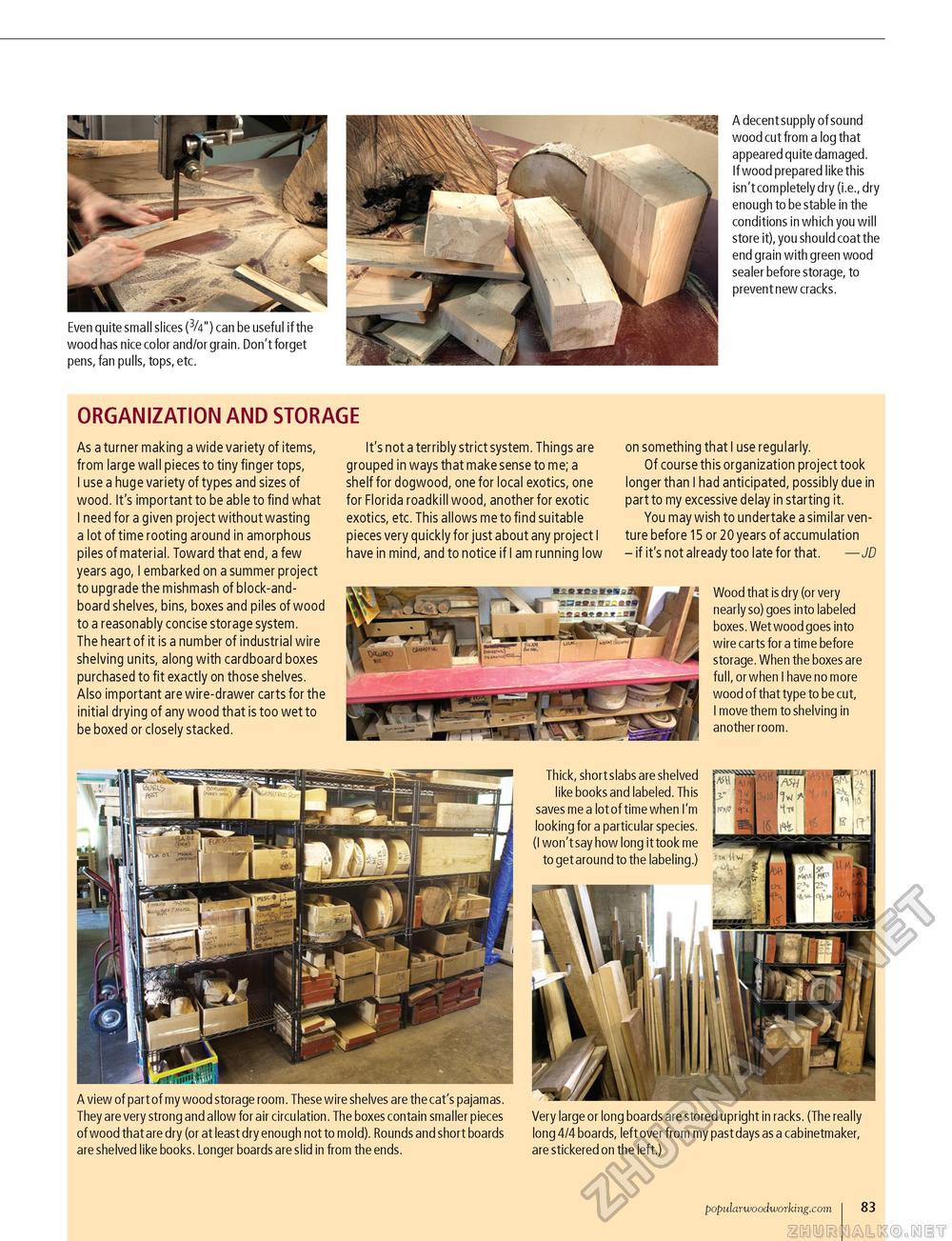Popular Woodworking 2006-06 № 155, страница 85
Even quite small slices (3/4") can be useful if the wood has nice color and/or grain. Don't forget pens, fan pulls, tops, etc. A decent supply of sound wood cut from a log that appeared quite damaged. If wood prepared like this isn't completely dry (i.e., dry enough to be stable in the conditions in which you will store it), you should coat the end grain with green wood sealer before storage, to prevent new cracks. ORGANIZATION AND STORAGE As a turner making a wide variety of items, from large wall pieces to tiny finger tops, I use a huge variety of types and sizes of wood. It's important to be able to find what I need for a given project without wasting a lot of time rooting around in amorphous piles of material. Toward that end, a few years ago, I embarked on a summer project to upgrade the mishmash of block-and-board shelves, bins, boxes and piles of wood to a reasonably concise storage system. The heart of it is a number of industrial wire shelving units, along with cardboard boxes purchased to fit exactly on those shelves. Also important are wire-drawer carts for the initial drying of any wood that is too wet to be boxed or closely stacked. It's not a terribly strict system. Things are grouped in ways that make sense to me; a shelf for dogwood, one for local exotics, one for Florida roadkill wood, another for exotic exotics, etc. This allows me to find suitable pieces very quickly for just about any project I have in mind, and to notice if I am running low on something that I use regularly. Of course this organization project took longer than I had anticipated, possibly due in part to my excessive delay in starting it. You may wish to undertake a similar venture before 15 or 20 years of accumulation - if it's not already too late for that. — JD Wood that is dry (or very nearly so) goes into labeled boxes. Wet wood goes into wire carts for a time before storage. When the boxes are full, or when I have no more wood of that type to be cut, I move them to shelving in another room. A view of part of my wood storage room. These wire shelves are the cat's pajamas. They are very strong and allow for air circulation. The boxes contain smaller pieces of wood that are dry (or at least dry enough not to mold). Rounds and short boards are shelved like books. Longer boards are slid in from the ends. Thick, short slabs are shelved like books and labeled. This saves me a lot of time when I'm looking for a particular species, (I won't say how long it took me to get around to the labeling.) Very large or long boards are stored upright in racks. (The really long 4/4 boards, left over from my past days as a cabinetmaker, are stickered on the left.) popularwoodworking.com I 83 |








